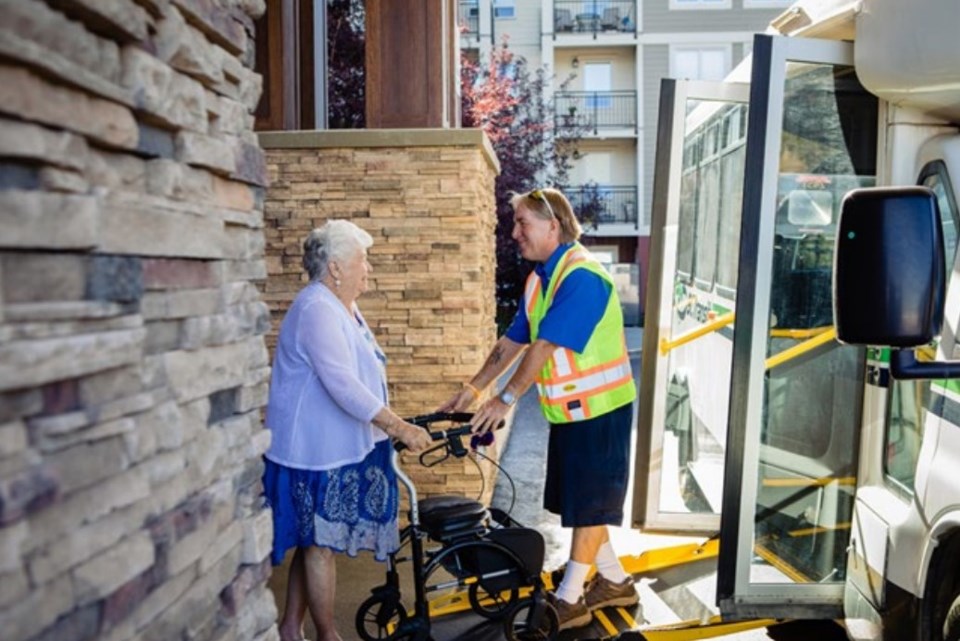Services for those who use handyDART's accessible, door-to-door shared transit on the Sunshine Coast will be ramping up, likely by July.
At the Sunshine Coast Regional District’s (SCRD) March 28 committee of the whole meeting, local officials gave the nod to extending that service on weekdays to 5:30 p.m. (it starts at 8:30 a.m.) and adding service on Sundays and holidays to match the current Saturday schedule of 10 a.m. to 3 p.m. While the changes require SCRD board endorsement and finalization of the Coast’s 2024/25 BC Transit (BCT) operating agreement, staff indicated the changes could be made within a couple of months.
Is more conventional bus use possible?
Passenger “training” will also be enhanced. According to a meeting presentation from BCT’s Rod Ringma, training can help locals who currently don’t believe they can use conventional buses to discover that it is possible. He explained that buses have ramps, adjustable seating areas and the ability to lower themselves at curbs. With those capacities, many individuals with mobility limitations are able to travel on regular buses safely. In passenger “training” sessions, a staff member or other person familiar with those features works with an individual to see if conventional transit can be an option for them.
Making the best use of conventional transit not only gives individuals access to wider transportation options, it saves everyone money. The Coast’s per-person cost to provide a ride on conventional transit is $9, for which fare-paying passengers contribute $2 and the remainder is shared by BCT and the SCRD. The cost for handyDART is $56 per rider, with the same $2 fare charged. While that service cost is lower than the provincial average of $60 per custom transit ride, the potential savings of redirecting passengers from handyDART to conventional buses were of keen interest to local elected officials.
Committee looks to bring down costs
Committee members also inquired about other ways to save cash such as downsizing the vehicles used locally for the handyDART service. Ringma indicated that while BCT is exploring new options, any additional custom transit service vehicles ordered for Sunshine Coast Transit (SCT) in the next few years would be similar to the existing ones. That is because BCT orders buses based on the needs of communities throughout the province and that currently there are “no smaller options available."
Gibsons area alternate director Stafford Lumley asked about adding “revenue generating” advertising to vehicles in the handyDART fleet, similar to what can be seen on other SCT buses. Ringma said that was a local decision and that if done, that would reduce the SCRD’s costs. All local advertising revenue is used to offset what the local government pays into the service, he noted.
Review report received
Eighty per cent of local handyDART users were “satisfied or extremely satisfied” with its services, according to the Sunshine Coast handyDART Services Review report, produced after engagement with the community between October and January.
The report also pointed out that most client concerns focused on the desire to have more handyDART units in service during peak travel hours and improvements needed in the ride booking and user registration systems.
Area E director Donna McMahon said she wanted to see more coordination with the locally based Getting There Society to create transportation services that are a better fit with realities on the Coast, including long distances between residences, narrow roads and driveways that are too steep or do not have room for larger vehicles to turn around in.



